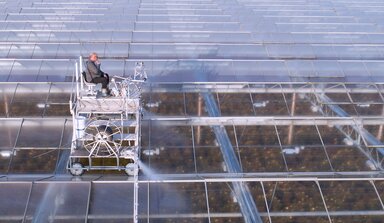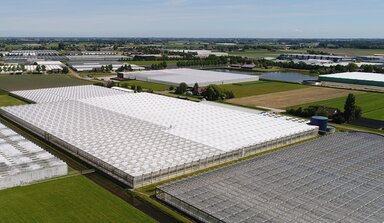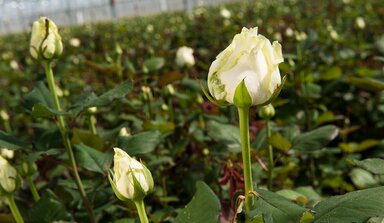Compact plants by playing with climate and light
The height of flowering potted- and bedding plants can be controlled by targeted use of climate and light.
The use of growth inhibitors is under pressure and that is boosting the search for different ways to keep potted- and bedding plants compact. Insight into this is growing but the perfect alternative to growth regulators has still not been found.
Plants stretch for two reasons: to rise above their neighbours and in so doing benefit more from the light, and secondly to display their flowers well to pollinators. In both cases the plant hormones “gibberellins” play the main role. There are about 125 gibberellins, of which a large proportion does not appear to be biologically active, but much is still unknown. In particular, insight has yet to grow into the control of flowering through the interplay between gibberellins, other plant hormones, sugars and proteins.
This lack of understanding is also why it's not so easy to steer without using inhibitors. The growth inhibitors work against the production of gibberellins and that usually leads to compactness, but surprises occur frequently. This can be due to the interaction with a climate factor or due to the biological clock of the plant.
Steering with climate, water supply and fertilisation
Environmental factors that can influence compactness are: light intensity, light colour, temperature gradient, watering, EC and fertilisation. In this article we mainly focus on light, but firstly a few words about the other factors. In practise we know that growing on the dry side, high EC and low phosphate fertilisation keep plants more compact. Also the difference between day and night temperatures is important. If it is warmer at night than during the day, this often has an inhibitory effect on height. In addition, a sudden drop in temperature at the beginning of the day can cause that too.
The greenhouse temperature has a big effect and is definitely a control instrument, assuming the grower is able to manage the temperature. ReduSol, ReduHeat and ReduFuse IR can help in this respect.
Steering with light
The relationship between light intensity and temperature is especially important. High light intensity leads to stocky plants. So basically it is beneficial to allow a lot of light into the greenhouse. At that time a rising temperature is less worrying. But many of these plants are also sensitive to light and the grower therefore tends to limit the light level by applying a coating to the roof or by screening.
Research by Wageningen University & Research shows that many potted plants benefit from a higher light level under a number of conditions: the light should be diffuse (achieved by using ReduFuse); humidity should not fall too much; and plant temperature should not rise too much (achieved by using ReduFuse IR).
Trials at the French horticultural institute Astredhor in Brittany showed that 23 of the 25 ornamental crops tested remained more compact under ReduHeat. These trials involved cultivation in plastic tunnels. ReduHeat allows PAR-light through (needed for photosynthesis) and blocks NIR-radiation (which causes a rise in heat), thereby changing the relationship between light intensity and temperature: the temperature in the tunnels rose less while the light intensity remained at the right level.
Light colour is important
Over the last few years there is also a growing understanding that the relationship between light colours is important. It was known for some time that the relationship between red/far red at the end of the day (light period) can have a big effect. A relatively large amount of far red light promotes stretching but trials specifically focused on this effect at the end of the day have often not produced the expected or desirable effect.
Additional exposure to red light during the entire day certainly has a large effect. The more red light the more compact the plant. However, it is difficult to translate this knowledge into practise: you would have to mix in an awful lot of red light when there is a lot of sunlight. Another important point is the blue component in the light spectrum. Under blue light flowering plants show less stretching and more branching, which increases their sales value. However, they tend to be less heavy and have smaller leaves. Sunlight consists of 31% blue light. To see any effect the ratio of red/blue light needs to change considerably.
Last year Wageningen University & Research, supported and financed by the Club of 100, carried out research into steering with blue light and the relationship of red/far red during dawn and dusk. Providing fuchsias with extra blue light produced more compact plants likewise continuous lighting during dawn and dusk. Potentially, these treatments could be combined. However, on Hibiscus rosa-sinensis there was no effect.
ReduFlex Blue
Flowering pot plants often need to be compact while extra stretching can be desired in cut flowers. Insights into the influence of blue light have led to the development of ReduFlex Blue, a coating that partly blocks blue light and thus changes the ratio of red/blue. Various rose varieties show better stretching under ReduFlex Blue, which results in a better price for these cut flowers.


